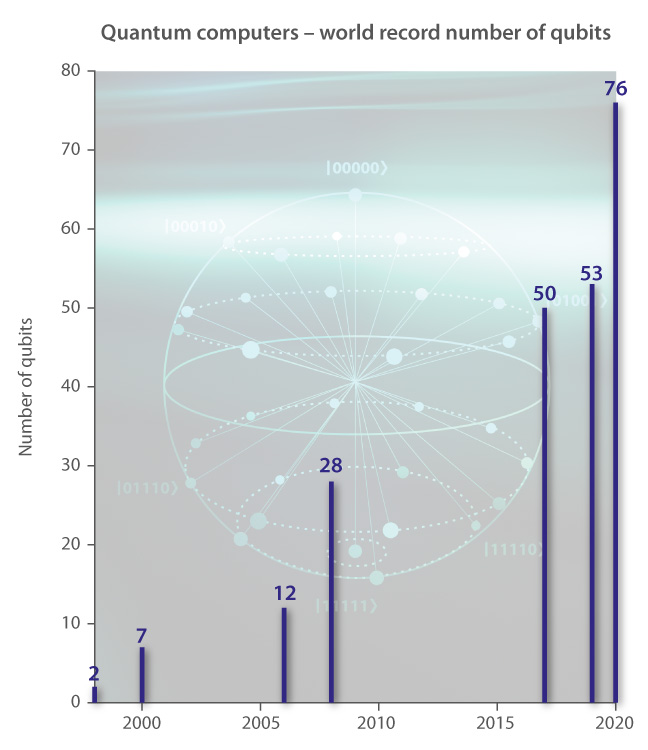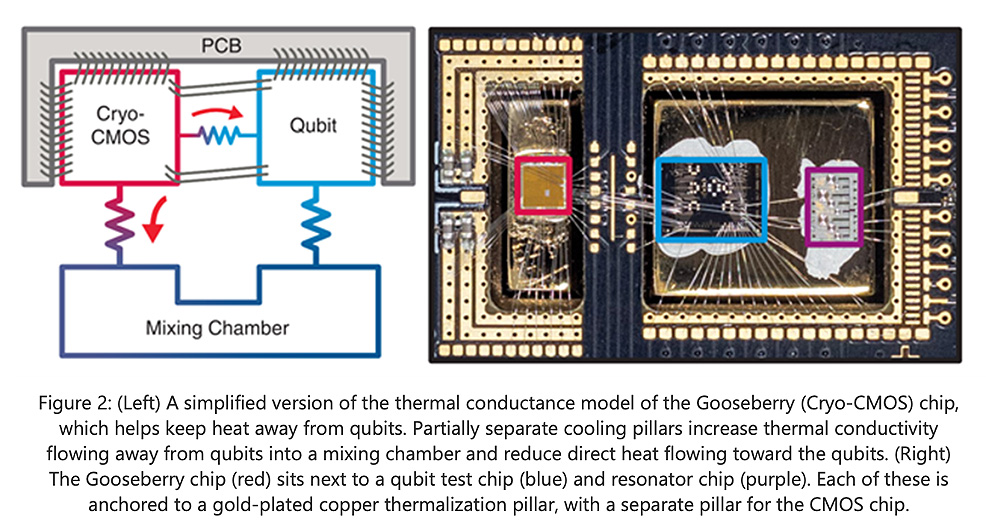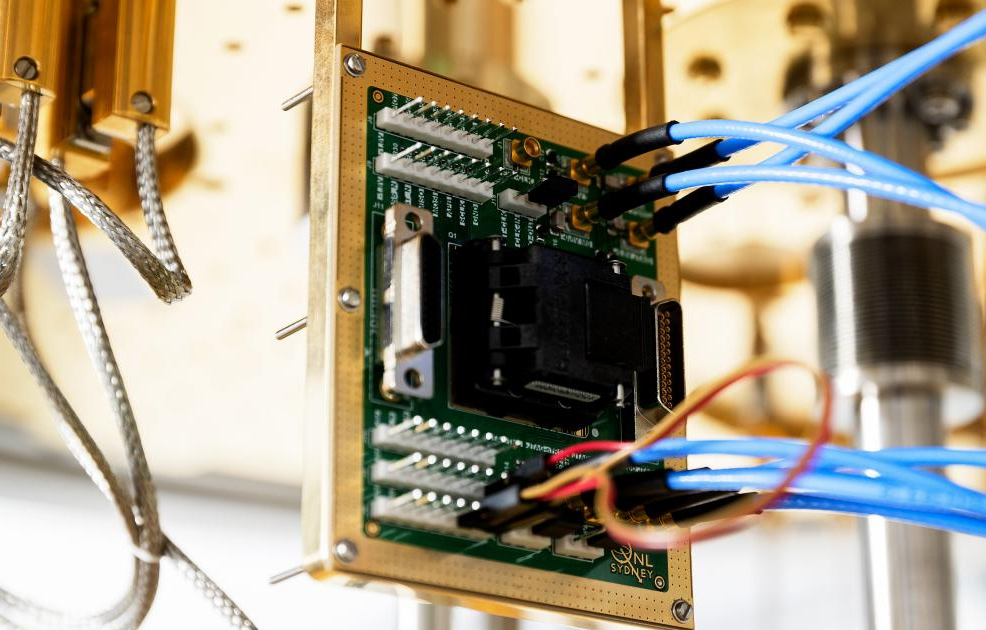
11th February 2021 New device for scaling up quantum computers Australian scientists have developed a new cryogenic computer system called Gooseberry which has potential for scaling up quantum computers from dozens to thousands of qubits.
Quantum computing – as opposed to traditional (or "classical") computing – has been around for many years now. This area of computer science involves the exploitation of physical phenomena such as superposition and entanglement to perform calculations. Unlike the "bits" of classical computers, which are based on binary ones and zeros, quantum computer "qubits" can work with multiple values simultaneously. By combining qubits in this way, it quickly becomes possible to work with exponentially larger numbers, with potentially revolutionary applications. If fully realised, quantum computers could solve problems in fields as diverse as cryptography, medicine, finance, artificial intelligence and logistics. However, qubits are difficult to create and require extreme stability to maintain their quantum effects. Researchers at the University of California, Berkeley, demonstrated the first working, two-bit quantum computer able to perform calculations in 1998. Munich's Technical University achieved five qubits in 2000 and the Los Alamos National Laboratory in New Mexico achieved seven qubits that same year. Since then, further progress has occurred, with a ten-fold increase in qubit counts. Chinese researchers claimed "quantum supremacy" in December 2020 with a 76-qubit system, calculating at 100 trillion times the speed of classical supercomputers. IBM is planning a 1,000+ qubit machine for 2023 and has hinted at the possibility of million-qubit systems in the 2030s. In order to create order of magnitude improvements in future systems, scientists around the world are researching better ways to link and control qubits, such as new materials and architectures. One such development is emerging from a partnership between Microsoft and the University of Sydney. Professor David Reilly and his colleagues have invented a device that operates at just 100 millikelvin (mK), or 30 times colder than deep space. This has potential to be scaled up for directly controlling thousands of qubits, the building blocks of quantum technology.
"To realise the potential of quantum computing, machines will need to operate thousands if not millions of qubits," said Reilly, who holds a joint position with Microsoft and the University of Sydney. "The world's biggest quantum computers currently operate with just 50 or so qubits. This small scale is partly because of limits to the physical architecture that control the qubits. Our new chip puts an end to those limits." Most quantum systems require qubits to operate at close to absolute zero (-273.15°C), to prevent losing their 'quantumness', the character of matter or light needed to perform their specialised computations. In order for quantum devices to do anything useful, they need instructions. That means sending and receiving electronic signals to and from the qubits. With current quantum architecture, that involves a lot of wires. "Current machines create a beautiful array of wires to control the signals; they look like an inverted gilded birds' nest or chandelier. They're pretty, but fundamentally impractical. It means we can't scale the machines up to perform useful calculations. There is a real input-output bottleneck," said Reilly, also a Chief Investigator at the Australian Research Council (ARC) Centre for Engineered Quantum Systems (EQUS). "Our device does away with all those cables," said Dr Kushal Das, Microsoft Senior Hardware Engineer and co-inventor of the chip. "With just two wires carrying information as input, it can generate control signals for thousands of qubits. This changes everything for quantum computing." "Through our partnership with Microsoft, we haven't just suggested a theoretical architecture to overcome the input-output bottleneck, we've built it," said Reilly. "We have demonstrated this by designing a custom silicon chip and coupling it to a quantum system. I'm confident to say this is the most advanced integrated circuit ever built to operate at deep cryogenic temperatures."
"Operating at such cold temperatures means we have an incredibly low power budget. If we try to put more power into the system, we overheat the whole thing," explained Dr Sebastian Pauka, whose doctoral research at the University of Sydney encompassed much of the work to interface quantum devices with the chip. To get around this problem, they engineered a system that operates in close proximity to the qubits, but without disturbing their operations. A paper describing the new approach in more detail appears in the journal Nature Electronics. "Current control systems for qubits are removed metres away from the action, so to speak. They exist mostly at room temperature," said Reilly. "In our system we don't have to come off the cryogenic platform. The chip is right there with the qubits. This means lower power and higher speeds. It's a real control system for quantum technology." "Working out how to control these devices takes years of engineering development," he continued. "For this device, we started four years ago when the University of Sydney started its partnership with Microsoft, which represents the single biggest investment in quantum technology in Australia. "We built lots of models and design libraries to capture the behaviour of transistors at deep cryogenic temperatures. Then we had to build devices, get them verified, characterised and finally connect them to qubits to see them work in practice. "We are just getting started on this new wave of quantum innovation. The great thing about the partnership is we don't just publish a paper and move on. We can now continue with the blueprint to realise quantum technology at the industrial scale." "This is going to be transformational in the next few years," said Prof. Andrew White, director of the ARC Centre of Excellence for Engineered Quantum Systems, who wasn't involved with the study, but oversees quantum research in Australia. "If everyone [developing quantum computers] isn't using this chip, they will be using something inspired by it."
Comments »
If you enjoyed this article, please consider sharing it:
|









